
USS Shark (SS-314), a Balao-class submarine, was the sixth ship of the United States Navy to be named for the shark, a large marine predator.

USS Snook (SS-279), a Gato-class submarine, was the first ship of the United States Navy to be named for the common snook, an Atlantic marine fish that is bluish-gray above and silvery below a black lateral line.

USS Finback (SS-230), a Gato-class submarine, was the first ship of the United States Navy to be named for the finback. Nine of Finback's twelve World War II patrols in the Pacific were designated as "successful"; she received 13 battle stars for her service and is credited with having sunk nearly 70 thousand tons of enemy shipping.
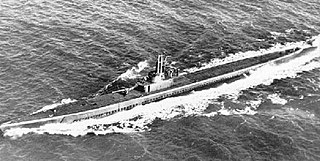
USS Flasher (SS-249) was a Gato-class submarine which served in the Pacific during World War II. She received the Presidential Unit Citation and six battle stars, and sank 21 ships for a total of 100,231 tons of Japanese shipping, making her one of the most successful American submarines of the War. She was the first ship of the United States Navy to be named for the flasher.

USS Gurnard (SS-254), a Gato-class submarine, was the first ship of the United States Navy to be named for the gurnard.

USS Jack (SS-259), a Gato-class submarine, was the first ship of the United States Navy to be named for the jack.

USS Seahorse (SS-304), a Balao-class submarine, was the first submarine and second ship of the United States Navy to be named for the seahorse, a small fish whose head and the fore part of its body suggest the head and neck of a horse.
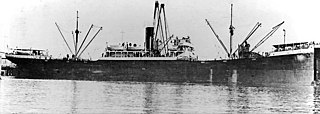
Seisho Maru was a cargo ship for Mitsui Bussan Kaisho in military service that was sunk by an American submarine during World War II. The ship had been built as SS West Caruth, a cargo ship for the United States Shipping Board (USSB) shortly after the end of World War I. Shortly after completion, the ship was inspected by the United States Navy for possible use as USS West Caruth (ID-2850) but was neither taken into the Navy nor ever commissioned under that name. Before being sold to Japanese owners in 1928, she was also known as SS Exmoor and SS Antonio Tripcovich.
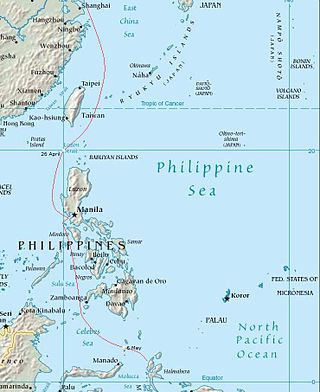
The Take-Ichi sendan was a Japanese naval convoy of World War II. The convoy left occupied Shanghai on 17 April 1944, carrying two infantry divisions to reinforce Japan's defensive positions in the Philippines and western New Guinea. United States Navy (USN) submarines attacked the convoy on 26 April and 6 May, sinking four transports and killing more than 4,000 soldiers. These losses caused the convoy to be diverted to Halmahera, where the surviving soldiers and their equipment were unloaded.

Okinawa was an escort ship ("Kaibōkan") of the Imperial Japanese Navy during the Second World War. She belonged to the Ukuru class. The ship is most notable for its possible participation in the sinkings of two submarines.
The Nichiryu Maru was a 5,447 gross register ton cargo ship built by Asano Ship Building Company, Tsurumi in 1919 as Rozan Maru. She was the third ship of the Yoshida Maru No 1-class of 25 standard cargo ships built by Asano Shipyard between 1918 and 1919. In April 1929, she was acquired by Karafuto Kisen Kabushiki Kaisha and in 1931, renamed Karafuto Maru. On 22 November 1937, she was acquired by Nissan Kissen Kabushiki Kaisha and renamed Nichiryu Maru. She was requisitioned by the Imperial Japanese Army during World War II.

The steam ship Cap Finisterre was a German transatlantic ocean liner of the early 20th century, which was transferred to Japan in 1920 as German war reparations, and renamed Taiyō Maru (大洋丸) on trans-Pacific routes. She was sunk on army service by an American submarine in 1942, during World War II, with the loss of over 800 lives, mostly civilians.

Sakito Maru was a 7,126-ton Japanese troop transport that operated during World War II. She was sunk on 1 March 1944 with great loss of life.

America Maru was the second of three high speed passenger liners built for the Oriential Steamship Company. Converted into an armed merchantman during the Russo-Japanese War of 1904–1905, she played a crucial role in the Battle of Tsushima. Although used as a hospital ship during the early part of World War II, she had been chartered by the Imperial Japanese Navy as a transport in 1943, and was sunk by the United States Navy in 1944 with great loss of civilian lives.
CH-16 was a No.13-class submarine chaser of the Imperial Japanese Navy during World War II.
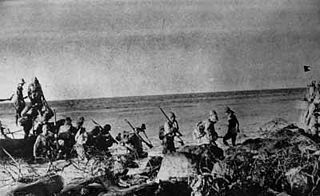
Kaimei Maru was a Japanese troop transport ship operated by the Imperial Japanese Army during World War II which was sunk off Honshu on 4 September 1942 by the American submarine USS Guardfish. The ship was a British WWI Type B military cargo ship built by the Hong Kong and Whampoa Dock Company.
Gyoun Maru was an auxiliary transport of the Imperial Japanese Navy during World War II.
CD-47 was a C Type class escort ship (Kaibōkan) of the Imperial Japanese Navy during the Second World War.
Nichiai Maru (Japanese:日愛丸) was a transport of the Imperial Japanese Army during World War II.
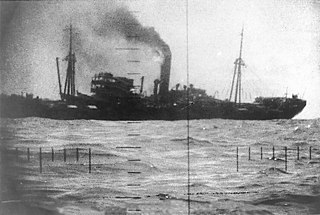
Buyo Maru (Japanese:武洋丸) was a transport and hellship of the Imperial Japanese Army during World War II.














